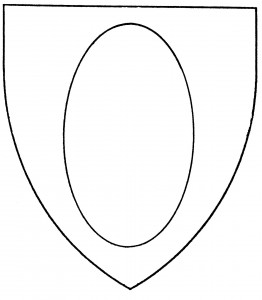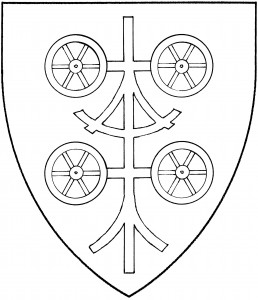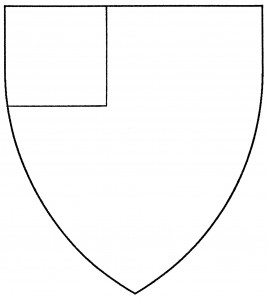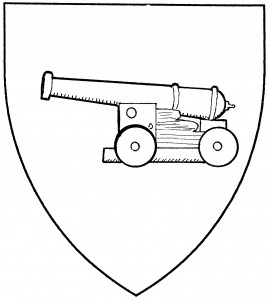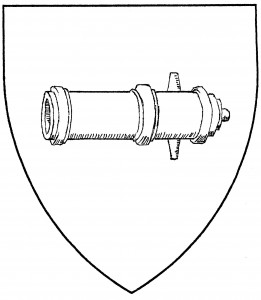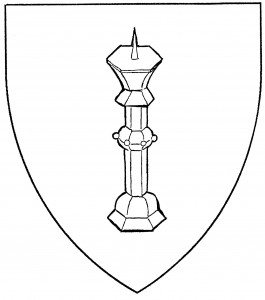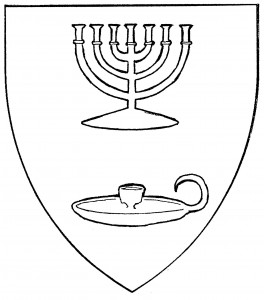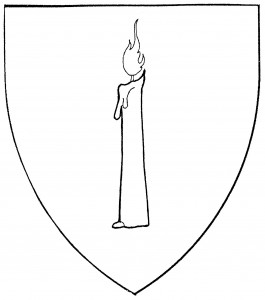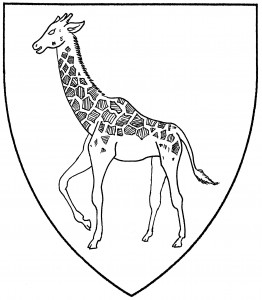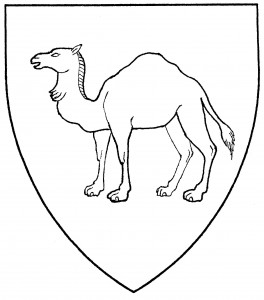A castle is a mighty edifice, a fortress or stronghold, generally made of stone. It is an ancient charge, found in the canting arms of the Kings of Castile, c.1244 [Asp2 213]. In early heraldry, no distinction was drawn between the castle and the tower; Society heraldry distinguishes between the two forms for the artist’s sake, but grants no difference.
The typical castle is of two towers, joined by an embattled wall with a gate; a “castle triple-towered” has a third tower issuant from the joining wall. The gate is usually shown closed, but this is an artistic detail; some early Society blazons use the term “friendly castle” to denote one with an open gate. (The term is no longer used; the gate is now left to the artist.)
The castle is sometimes blazoned a “fortress” or a “citadel”, especially for canting purposes. For related charges, see bridge.
The Baron of Ben Dunfirth bears: Barry wavy argent and sable, a castle within a laurel wreath Or.
David of Castlewhyte bears: Per chevron gules and sable, three castles argent.
Harold Breakstone bears: Or, a castle triple-towered sable, pennons flotant to sinister vert.

